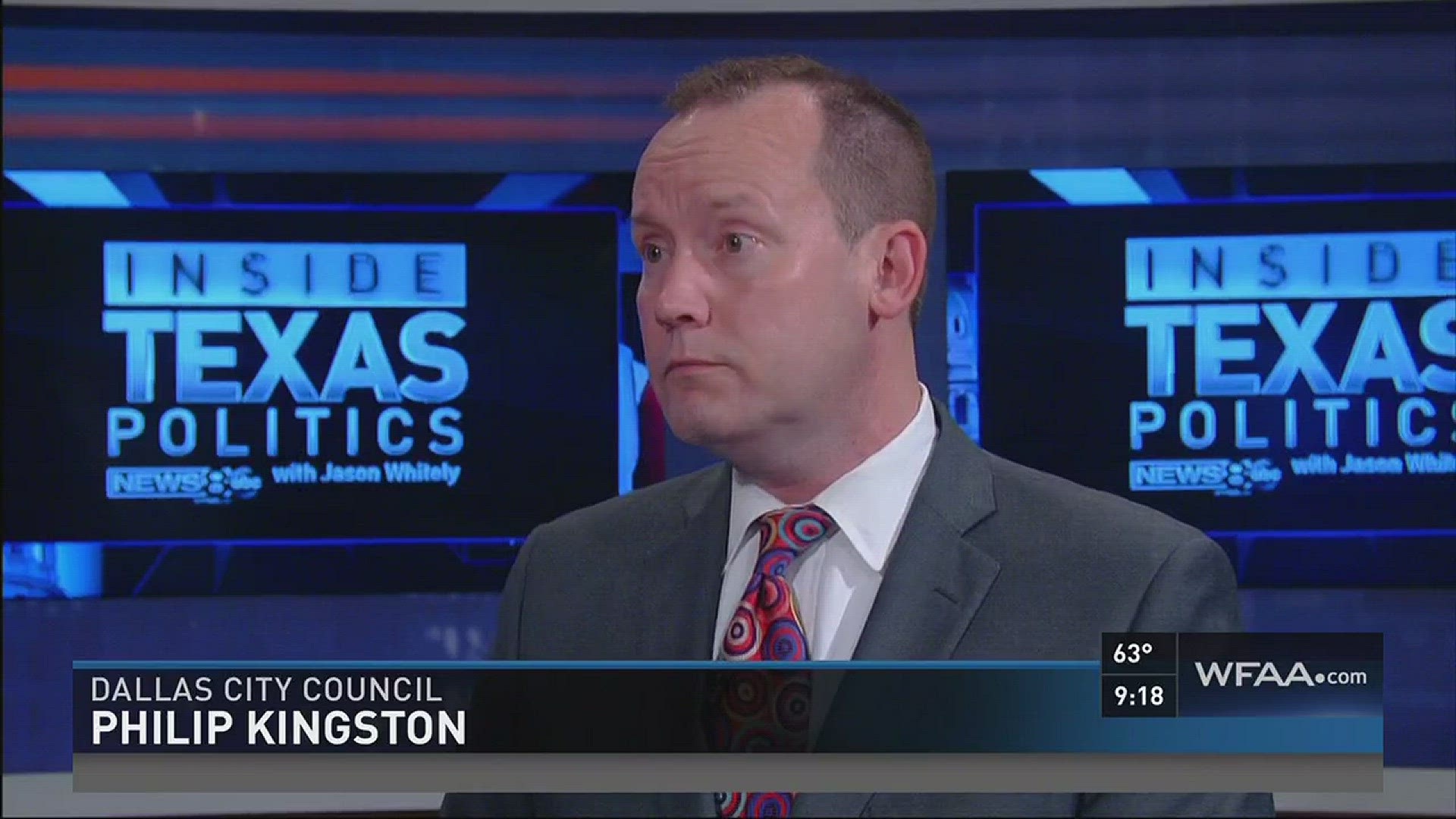DALLAS -- The Museum Tower, the tall gleaming skyscraper of luxury condominiums on the edge of Klyde Warren Park and at the center of controversy over the glare it shines on the Nasher Sculpture Center, should be considered for sale to replenish the police and fire pension fund, said city Councilman Philip Kingston. "There have been no offers on Museum Tower," Kingston said on WFAA's Inside Texas Politics which aired this morning.
The councilman sits on the board overseeing the fund and is working to stabilize it after years of mismanagement.
When asked on Inside Texas Politics whether selling the 42-story Museum Tower should that be on the table, Kingston said "absolutely."
"If somebody has a check in the $100 million range then I think we would listen because it's just not selling quickly enough," the councilman explained. "The problem continues to be that the glare it produces destroys the gallery space at the Nasher and people who are our target market for the tower are people who like art so we shot ourselves in the foot."
Dallas' Police and Fire Pension Fund completed the building in 2013 at a cost of almost $200 million.
"I'd like to get more than [$100 million] but we've got, I think, about 200,000 square feet left to sell and I'd like to sell it $600-700 a foot," Kingston added.
More than half of the luxury condominiums have yet to sell.
"Honestly if we could sell it at a reasonable price in a reasonable period of time - sell the individual units - we could still probably get close to breaking even. It's not even close to our worst investment," Kingston said.
Museum Tower was part of global real estate portfolio amassed by Richard Tettamant, the former long-time administrator of the pension fund, which has resulted in massive financial losses and threatened the future for the city's retired police officers and firefighters.
Kingston said the fund has about $3 billion and needs $4 billion to maintain current benefits to retirees.
"If we don't right the ship it might last until 2034," he said.
"Not only were the investments bad, the real problem is the benefits that were paid out were far too rich. There are only two ways to lose money as a public pension fund; bad investments and pay out too much on benefits and we managed to do both at the same time," Kingston told WFAA.
Among other ways to avert disaster, he proposes reducing the generous 4% annual cost of living increase of the fund to sustain it for future retirees.
Watch the full interview with Kingston below:

